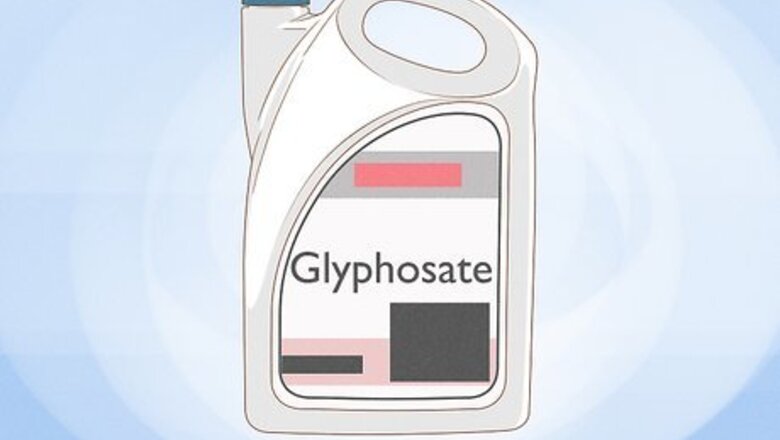
views
Chemical Herbicides

Use glyphosate or similar products. Broadleaf fertilizers will not work against foxtail since foxtail is a grass. If you want to use chemical control methods, you should look for an herbicide that can kill grasses. One of the most easily accessible types is a chemical called glyphosate. Glyphosate is a non-selective herbicide, so it will kill just about everything in the area you apply it in. For best results, spray the entire area with the glyphosate. Even though the other vegetation there will likely die, this is the quickest and most effective way of getting rid of fox tail.
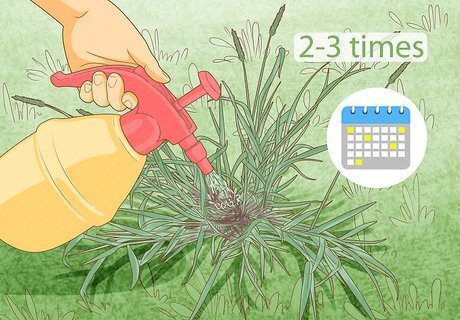
Apply several times. You will probably need to apply the herbicide two to three times, at minimum, before it wipes out the foxtail completely. Wait until after the foxtail reemerges before using another application. You should wait until two weeks or so pass before re-applying the herbicide, especially if using a potent one like glyphosate.
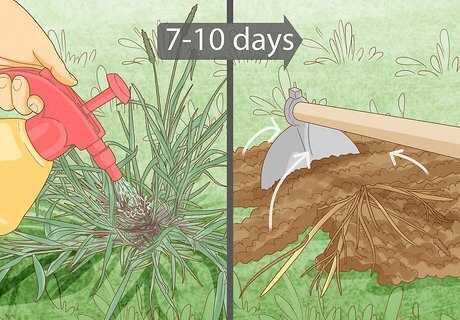
Combine chemical herbicides with organic weed-control methods. While chemical herbicides can take care of the majority of the problem, enlisting the help of certain organic control methods can help in between applications, making the extermination process go quicker overall. Seven to ten days after you apply the herbicide, turn under the dead plant residue. If you plan to amend the soil, do so now.
Organic Solutions
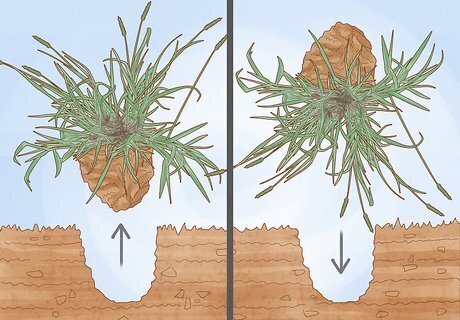
Turn the soil. Dig under the foxtail and turn the plants under the soil, packing them down into the dark, hot conditions. Doing so can impede growth and help kill off this pesky grass. Work by moonlight, at dawn, or at dusk. There is some speculation that turning the soil exposes the foxtail to a bright flash of light, thereby stimulating the plant and making it grow faster. If you turn the soil at night instead of during daylight hours, though, you can reduce this effect by as much as 78 percent.
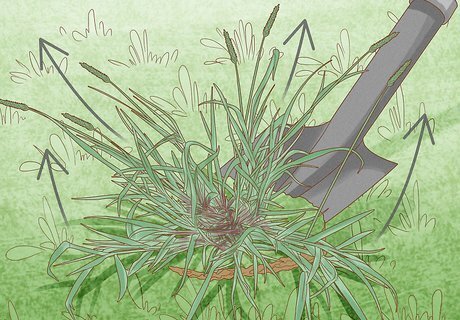
Pull or dig out the weeds. Alternatively, you could dig out the weeds one by one and dispose of them elsewhere, away from the contaminated area. Make sure that you remove the entire plant, including the roots, and not just the top portion. Remove the seed heads first to prevent them from spreading and repopulating the area with additional foxtail. After removing the seed heads, dig beneath the plants using a long, slender weeding tool to get at the long roots. Note that weeds are easier to pull when the soil is wet and the weeds are young. Foxtail is no exception to the rule. Pull the foxtail from its base if working by hand. Wear thick gardening gloves to protect your hands as you work. You could try using a mower or weed-wacker to cut off the tops and flowering heads of the foxtail. You will need to continually re-trim the foxtail throughout the season, though, since the plant will send up another flowering head as the summer progresses. If you do opt for the mower or weed-wacker option, make sure that you clean the blades afterward to prevent the accidental spread of foxtail seed. You should also rake the lawn to remove all the heads. Taking these additional steps will improve your chances of removing the foxtail with only a surface mowing.

Apply vinegar. If you like the ease and effectiveness of herbicides but do not like to use harsh chemicals on your vegetation, you can use vinegar instead. Vinegar is a natural and fairly tame acid, but it has been known to be effective in the removal of weed-type grasses like foxtail. A typical USDA-approved vinegar is five-percent acetic acid. Pour the vinegar directly onto the foxtail at the ground level. The basic idea is to get it as close to the roots as possible. Use enough vinegar to soak the soil beneath the foxtail. It does not need to be soggy, but it should be damp to the touch. Wait a week or two after the first application and monitor the effects. Dead or dying foxtail should be pulled as soon as possible. Foxtail that is still growing even after you use the vinegar should be soaked with another round. Reapply the vinegar as needed. Note that vinegar tends to be more effective when used on fox tail at the seedling state. It might not help quite as much on mature plants.
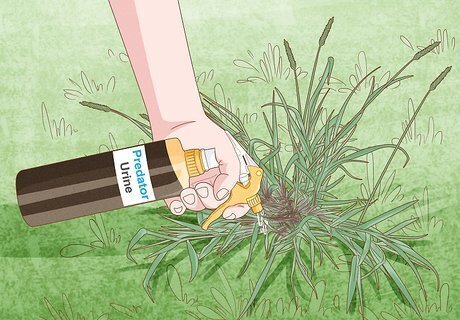
Use urine. While the concept of pouring urine onto a lawn or other area of vegetation may make you cringe, it can be just as effective as vinegar when used as an herbicide. Urine is a strong, organic alkaline substance, so it can kill foxtail in the same way that a chemical herbicide might. You can purchase "predator urine" products at garden stores. These products are usually used as deterrents or repellents against small garden pests, but they can also be used for herbicidal purposes. A cheaper and even more effective solution would be to use human urine. Collect the urine in a bucket and pour it straight onto the base of the foxtail, aiming for direct contact with the roots. As with many other control methods, you might need to use multiple applications of urine or use this organic herbicide in conjunction with physical removal methods. Remove the clumps of foxtail by hand or with a garden hoe once you notice them dying off.

Smother the area with mulch. If the foxtail is still fairly young, kill the new growth as soon as possible by covering it with some form of mulch. Mulch can prevent sunlight and air from reaching the foxtail, essentially depriving it of the nutrients and light necessary for growth. The foxtail will need to be trimmed close to the ground before you can apply mulch and use it as a way to get rid of the weed. If you have other plants and vegetation that you are trying to preserve, spread the mulch in between the plants and along the rows. Make sure that it covers the foxtail. Organic mulches like wheat straw, shredded leaves, and wood chips work well. Spread about 2 inches (5 cm) of mulch. You could also layer damp black-ink-only newsprint beneath the mulch to improve its ability to inhibit growth.
Future Prevention

Try a pre-emergence herbicide. If you are fine with chemical treatments, then a pre-emergent herbicide should be applied to the area just before new growth would be expected to form. This is especially important if you have had problems with foxtail already. A few standard chemical options include dacthal, balan, and pendimethalin. For an organic pre-emergent herbicide, try corn gluten meal. Sprinkle the product after your new lawn begins to grow to prevent foxtail and other weeds from taking root. Do not use it before growing your new lawn, though, since it could also prevent the desired grass from growing. Apply a pre-emergent herbicide treatment in the spring. If you apply it too early, though, they can lose their effectiveness. For best results, apply the herbicide once the weather warms up and stays warm. Lay it down just before you would expect the fox tail to pop up.
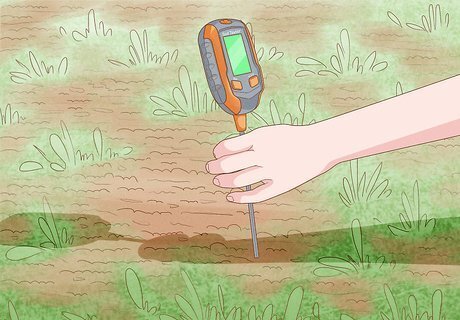
Monitor the pH of the soil. The soil conditions need to be ideal for other plants. If other plants can thrive in the soil, they will grow and absorb more nutrients, making it harder for the foxtail to find enough nutrients to survive. The exact pH your soil should be will vary depending on the type of vegetation you have there. The fertilizer and other soil amendments you use on the area will affect the pH. Note that such amendments generally have a greater impact on the pH if they are worked into the soil instead of spread on top. Herbicides can affect the pH, as well. As a general rule, if you add an acidic herbicide, balance it out with an alkaline substance afterward, and vice versa. Have a sample of your soil analyzed for pH at a lab.
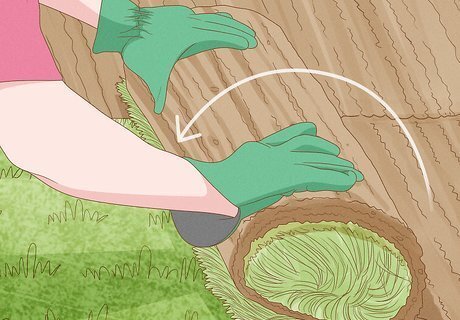
Fill the area with other growth. When an area of land is crowded by too much vegetation, some of the vegetation will inevitably die off once the roots begin to compete for nutrients and resources. You could also replace the grass entirely with sod. When choosing vegetation to plant in the area, opt for a solid-stand crop like legumes or grass hay. Row crops, like soybeans and corn, offer too much space in the soil and are not effective at stopping foxtail growth. If you plant other forms of grass in the area, keep the grass as plush, thick, and healthy as possible. Thick grass can also be helpful for use against foxtail growth.
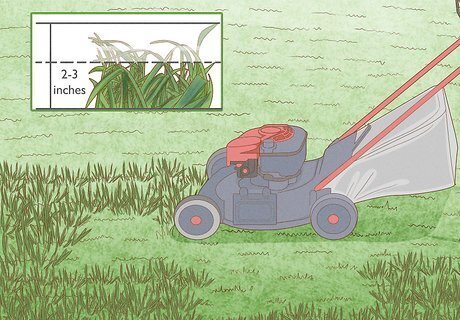
Keep the area trimmed. Regular mowing can keep the yard healthy, and a healthy yard is less likely to foster the growth of weeds like foxtail. While keeping the area trimmed is important, you should not keep it bare, either. Maintain a minimum grass height between 2 and 3 inches (5 and 7.6 cm).

















Comments
0 comment